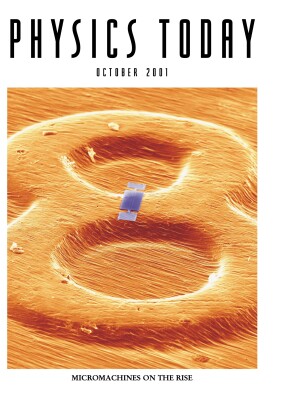A bronze-age belt
DOI: 10.1063/1.4796226
A bronze-age belt from Syria has been studied with scanning Auger microscopy. Researchers use the SAM technique to identify elements near the surface of a sample by monitoring the kinetics of electrons that were knocked out of the atoms by an incoming electron beam. In this way, a collaboration of researchers from Italy, the US, and the UK has characterized the ancient artifact’s microchemistry with a precedent-setting spatial resolution as good as 15 nm. Although bronze is an alloy of copper and tin, the group found that the belt’s original patina contained neither of those elements at the surface; rather, the patina arose from silicates and other compounds at the burial site. The researchers even spotted alloy inhomogeneities introduced by the smith during the belt’s manufacture. Turn to page 32 for more on physics and archaeology. (E. Paparazzo et al.., J. Vac. Sci. Technol. A 19, 1126, 2001 http://dx.doi.org/10.1116/1.1349191

